
One of the joys of the harvest from the orchard isn't biting into a fresh apple - here in the UK we can do this at any time from the end of August through until mid-December, but when we have an abundance of apples of every variety and type means juicing time and the start of cider making. I'm sharing the secrets and an easy-to-follow guide to making your own apple juice or cider in this article.
THE FRUIT
Cider can be made from almost any type of apple. However, you will get a more complex flavour if you use a mix of apple types - dessert, cookers and cider apples.
Apples can be divided into groups according to tastes sweets, sharp, bittersweets and bittersharp. The last two are found in cider apples because of the high concentration of tannin. If you don't have access to cider apples, try adding some crab apples to supply the tannins, and some Russets to give a bit more body. You can even stew a couple of teabags in a litre of hot water and add this to increase the tannin levels.
Apples are ripe when the pips are brown, the skin 'gives' slightly when pressed with a thumb and the skin has a waxy appearance (obviously not for russets). You need ripe apples to get the high sugar levels necessary for fermentation, and can ripen apples by storing for a few days. Don't use mouldy fruit for juice or cider. For juicing apples must be free from any cuts/damage/mould. Basically if you wouldn't take a bite out of it - chuck it away.
MILLING AND PRESSING
هذه القصة مأخوذة من طبعة September 2023 من The Country Smallholder.
ابدأ النسخة التجريبية المجانية من Magzter GOLD لمدة 7 أيام للوصول إلى آلاف القصص المتميزة المنسقة وأكثر من 9,000 مجلة وصحيفة.
بالفعل مشترك ? تسجيل الدخول
هذه القصة مأخوذة من طبعة September 2023 من The Country Smallholder.
ابدأ النسخة التجريبية المجانية من Magzter GOLD لمدة 7 أيام للوصول إلى آلاف القصص المتميزة المنسقة وأكثر من 9,000 مجلة وصحيفة.
بالفعل مشترك? تسجيل الدخول
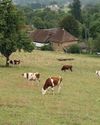
How to Buy a Smallholding in France- Long-time smallholder Lorraine Turnbull looks at the practicalities of moving to rural France
Aspiring smallholders are continually thwarted by the prices of smallholdings and property with land located within the UK. Even the humblest croft in Scotland comes with a substantial price tag and conditions which would make even an adventurous wannabee consider carefully. But all is not lost. For those willing to take the adventure of a lifetime, there is always Europe, and one of the most popular places is France.

Meet the Bournemouth goats and their supporters
These capricious animals are hard workers preserving the natural habitat
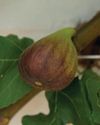
Still warm enough to sit outside with a Pizza
Henrietta Balcon uses fresh figs to create an unusual dish at Harvest time

Goodbye to the birds of spring and summer
If you look and listen you might be able to see them preparing to leave says The RSPB

Get ready for the colder weather in the warmth of late summer
Claire Waring advises on doing the best to make sure your colonies survive until next spring
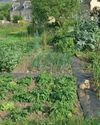
Preparing the Veg Patch for Winter
Lee Senior says, a well-run plot can excitingly continue to produce good quality, tasty, fresh food for much of winter
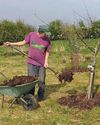
Time to prepare to plant your orchard
Wade Muggleton, smallholder and author of The Orchard Book, shares his practical experience so you can create your own fruit collection
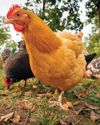
Choosing feed for the autumn
As autumn approaches, Joanna Palmer, nutritionist at the Smallholder Range, offers advice on choosing the right feed to support your adult birds through their annual moult and ensure your young birds grow and finish well at this time of the year.
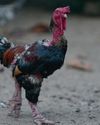
Vet advice from an experienced poultry vet
Reflecting on how much the humble hen has helped people world wide plus advice on stopping the scourge of red mite

Give your hens some support
Paul Donovan looks at the right and wrong ways of handling birds